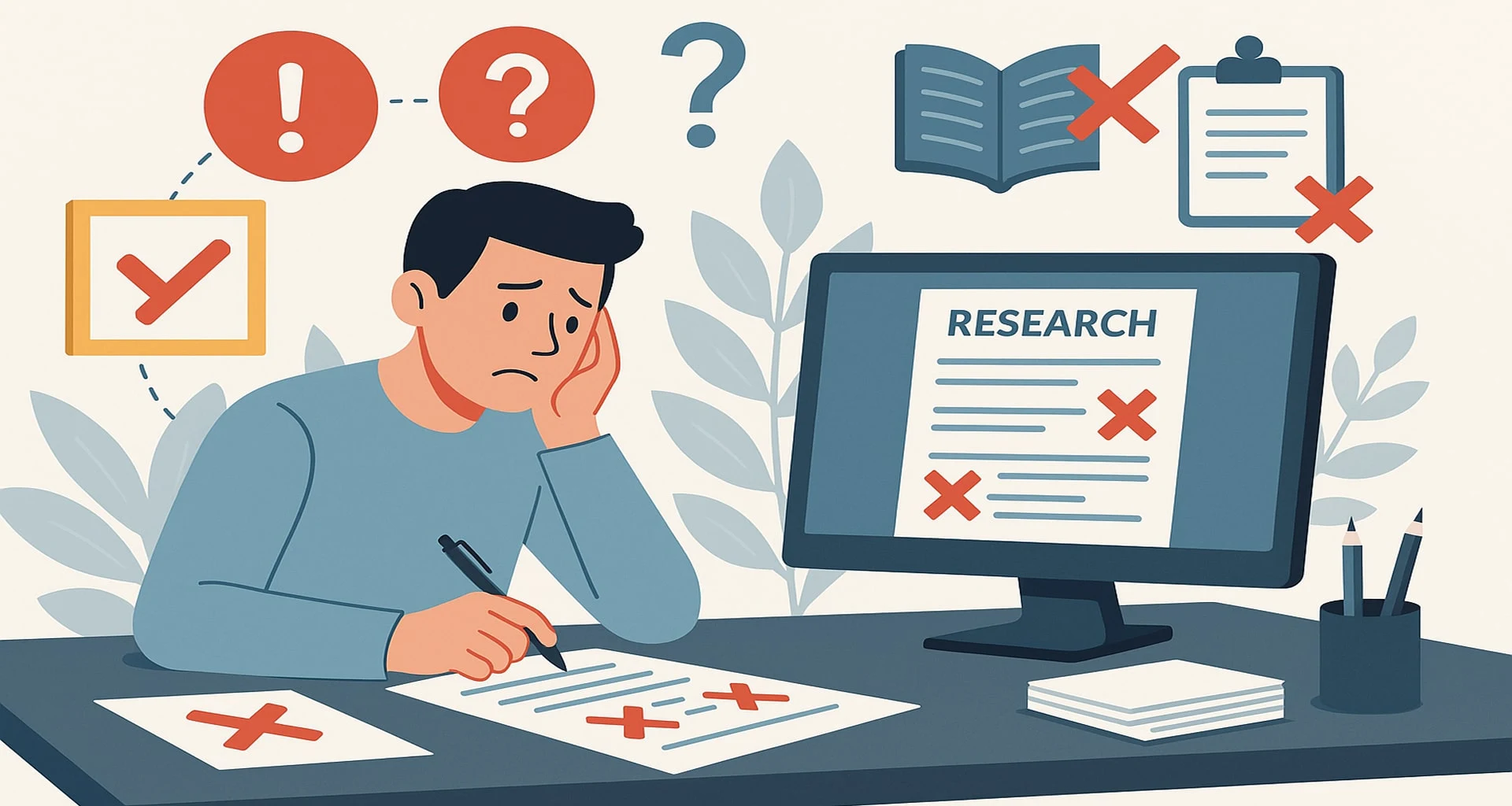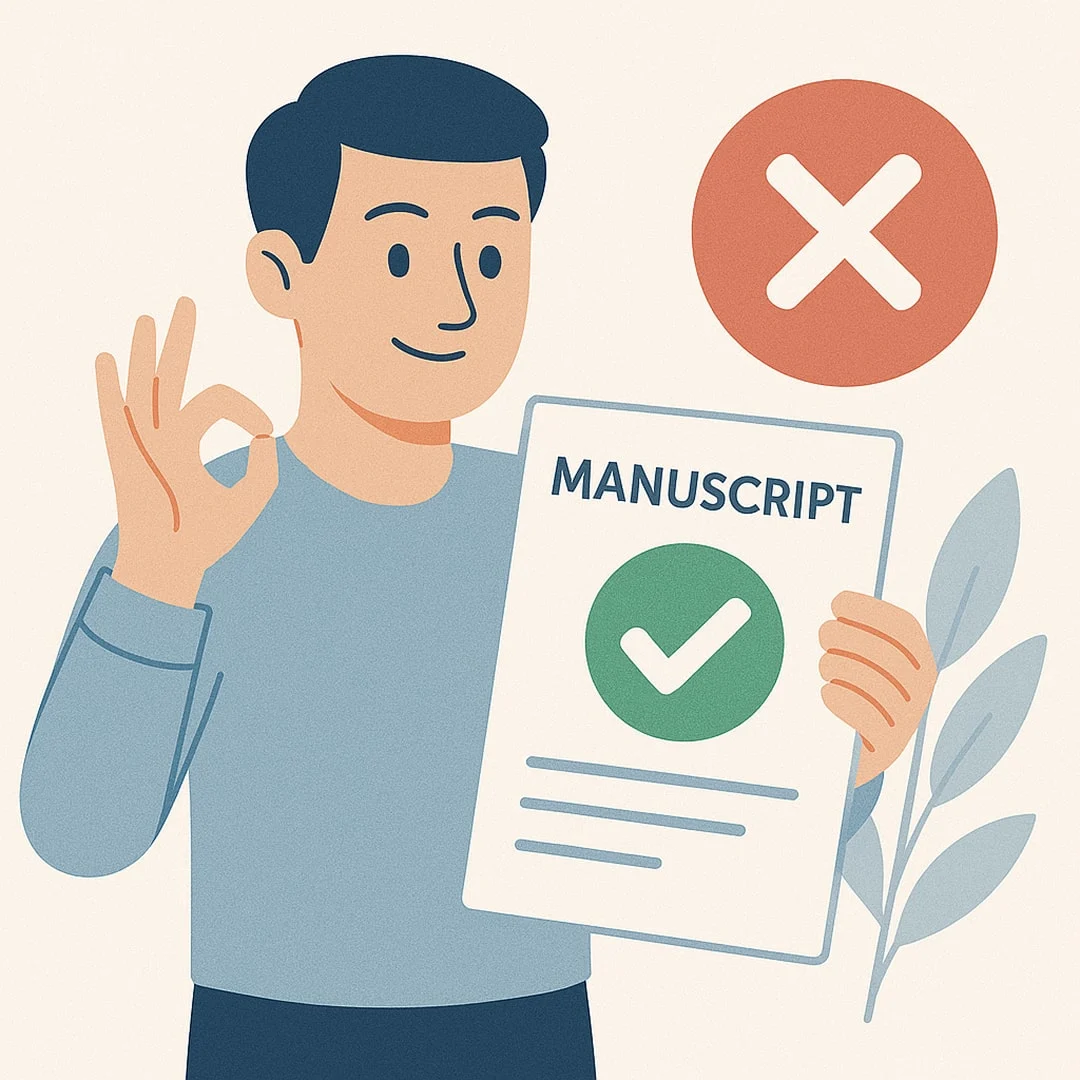7200859259



Publication of a journal paper is not merely research. It can be intimidating for many early-career researchers to learn how to publish a paper in a journal. You may think that having good research is enough, but it's not the whole process. Most quality papers are rejected, not because of bad results, but because of avoidable technical or strategic mistakes.
This blog is a description of the most common errors researchers commit and a demonstration of how to avoid them. Whether you are getting your first submission ready or have already experienced rejections, these tips will assist you in publishing more confidently and clearly.
Publishing a paper involves both strategy and science, and even groundbreaking research can be overlooked if it fails to meet the journal's expectations. Many submissions are rejected due to mismatches in scope and formatting errors. To enhance your paper's chances of acceptance, adhere to these essential steps, which represent not only best practices but also the habits of researchers who publish frequently and confidently.
One of the first and most frequent errors is sending your manuscript to the wrong journal. If there is a misalignment between your research and the scope of the journal, an outright desk rejection will be the outcome.
Avoid it by:
Reading the journal's aims, scope, and audience
Examining newly released articles for subject matching
Reviewing indexing databases such as Scopus or Web of Science
Knowing the acceptance rate and editorial response time
A journal can be renowned, but if it's not suited to you, your efforts will be futile.
For further guidance, see our tips on journal paper format blog to conform to submission guidelines.
The title and abstract are usually the only sections read during the initial screening. A technical title with no relevance can lead to the loss of interest of editors.
Avoid it by:
Creating a concise, specific title that embodies the central contribution
Producing an abstract that encapsulates your reason, methods, and findings without jargon
Remaining brief and consistent with journal style
Your abstract and title are your introduction—make it memorable.
Neglecting formatting requirements is a turn-off for editors. Journals have strict guidelines for how papers must be arranged, cited, and presented.
Avoid it by
Reading the Instructions for Authors carefully
Correctly following citation formats (APA, MLA, IEEE, etc.)
Remaining within the stated word limit, sectioning, and file types
Ensuring figures, tables, and references are neatly integrated
Mistakes in formatting reveal a lack of attention, which can greatly damage your prospects.
Unless your research is worthwhile, failure to present your research design, sample, and analysis well can raise questions about its validity.
Avoid it by:
Clearly defining your research design and justification
Explaining your data collection instruments, sampling technique, and analysis method
Transparency regarding limitations and ethical approvals
Observing sound methodology makes your research reproducible and credible. These are two factors reviewers have great respect for.
Most rejections result from ambiguous sentence structure or linguistic problems. Otherwise, adequately researched work is put on the shelf if it is not academically polished.
Avoid it by:
Writing in formal academic English with logical flow
Evading long, verbose sentences and redundancy
Maintaining regular tense, voice, and vocabulary
Seeking assistance from professional editing services
Want your manuscript to be perfect? Explore our journal paper publication services for professional help with organisation, tone, and readability.
Incomplete or inadequate referencing reflects poor engagement with the literature. Reviewers would like you to demonstrate awareness of recent advances in your area.
Avoid it by:
Referencing landmark publications and new studies in the past 5 years
Including sources from the journal you’re submitting to
Avoiding excessive self-citations or overuse of grey literature
Strong citations position your work in the ongoing scholarly dialogue.
Unintentional or otherwise, plagiarism is taken seriously by journals. Ethical lapses can result in immediate blacklisting.
Avoid it by:
Checking your draft using tools like Turnitin or iThenticate
Citing all sources and ideas not originally yours
Declaring any conflicts of interest or funding sources
Gaining ethics approval for human/animal research
Ethics aren't formalities; they're central to your credibility.
If your paper goes on to peer review, be prepared for tough feedback. Side-stepping probable issues in your initial submission is a wasted chance.
Avoid it by:
Foreseeing methodological or interpretational hurdles
Clarifying likely queries within the discussion or limitations section
Based on data, backing up your main claims
Anticipating objections is an act of scholarly maturity.
Most writers undervalue the significance of the cover letter. But this is your opportunity to introduce your paper and its significance.
Avoid it by:
Mentioning your paper's title, contribution, and novelty
Describing why it's appropriate for the target journal
Ensuring that it's not under review in another journal
Being brief and polite
A good cover letter can impact editorial choices.
Hanging up a finished paper without proper verification can erase months of work. Hastiness tends to cause small but expensive mistakes.
Avoid it by:
Conducting a final verification checklist
Asking peers or mentors to read the draft
Verifying citations, figures, and additional files
Ensuring documents are properly uploaded to the portal
If your work matters, it should receive a proper submission process.
Receiving a rejection is not the end. Most successful publications were accepted following one or more rounds of revision. The error is not revising or giving up a solid paper too early.
Avoid it by:
Objectively taking reviewer comments
Enhancing the manuscript using constructive criticism
Submitting to a more suitable journal, if necessary
Revisions are part of the process; see them as a chance, not a failure.
At times, the most intelligent decision is to seek advice. Whether it is editing, formatting, or journal choice, professional guidance can elevate your success rate impressively.
We guide you on how to publish a paper in a journal successfully if you do not know where to begin or how to go about it. From manuscript assessment to formatting and submission, we assist you in avoiding rejection and publishing confidently.

Publishing your research in’t just about effort; it’s about strategy. By avoiding these common mistakes, you not only improve your chances of acceptance but also grow as a more confident and capable scholar.
Academic publishing is highly competitive, but a thoughtful, well-planned approach makes your work stand out. Focus on originality, proper formatting, ethical integrity, and clear writing—these are the qualities that lead to successful publication.

Don't let small mistakes hold up your research potential. If you're stuck on formatting, unsure of journal fit, or require editing assistance, our professional academic staff are here to assist.
Start your project today and take the next assured step on your publication path.